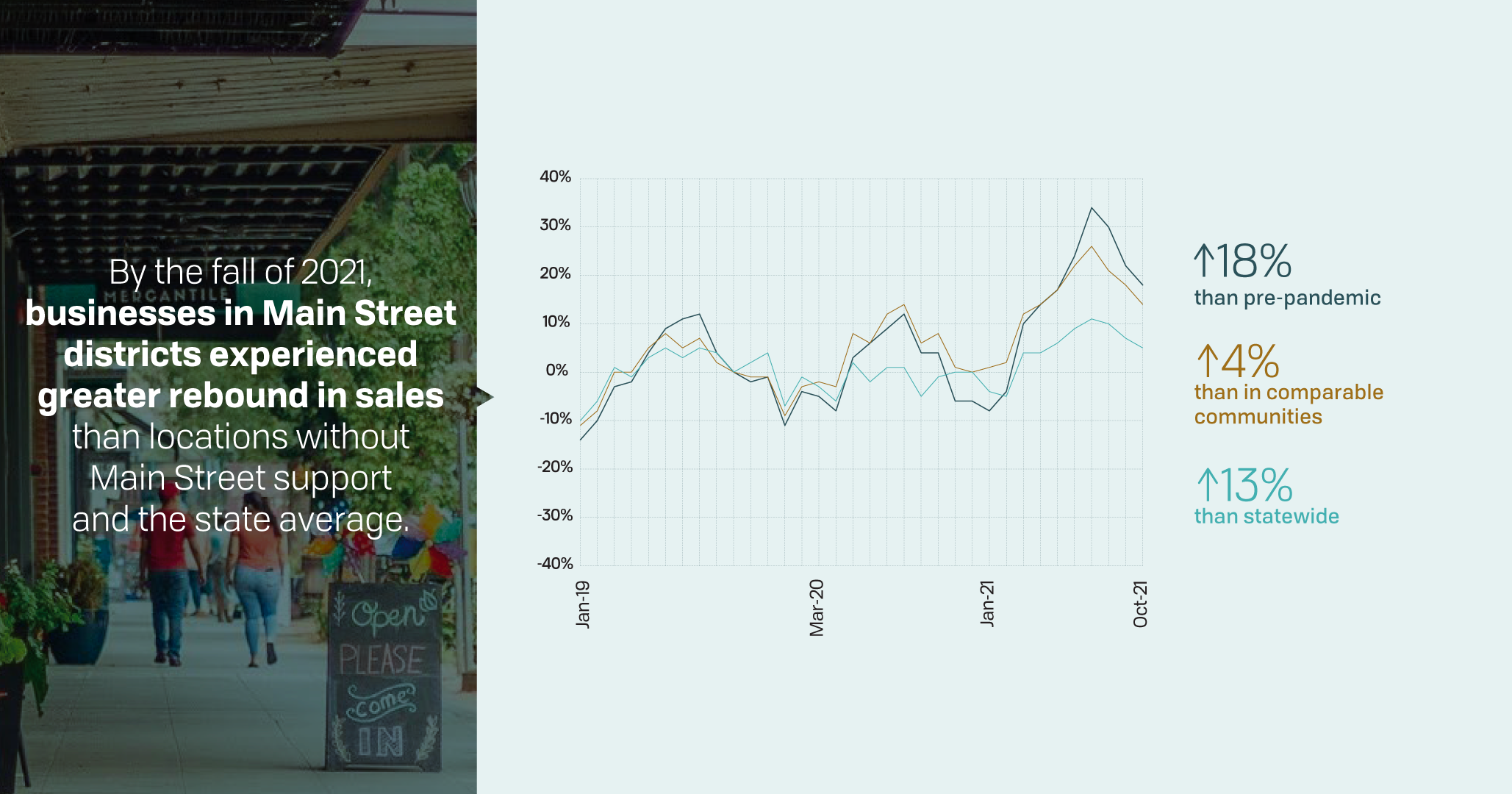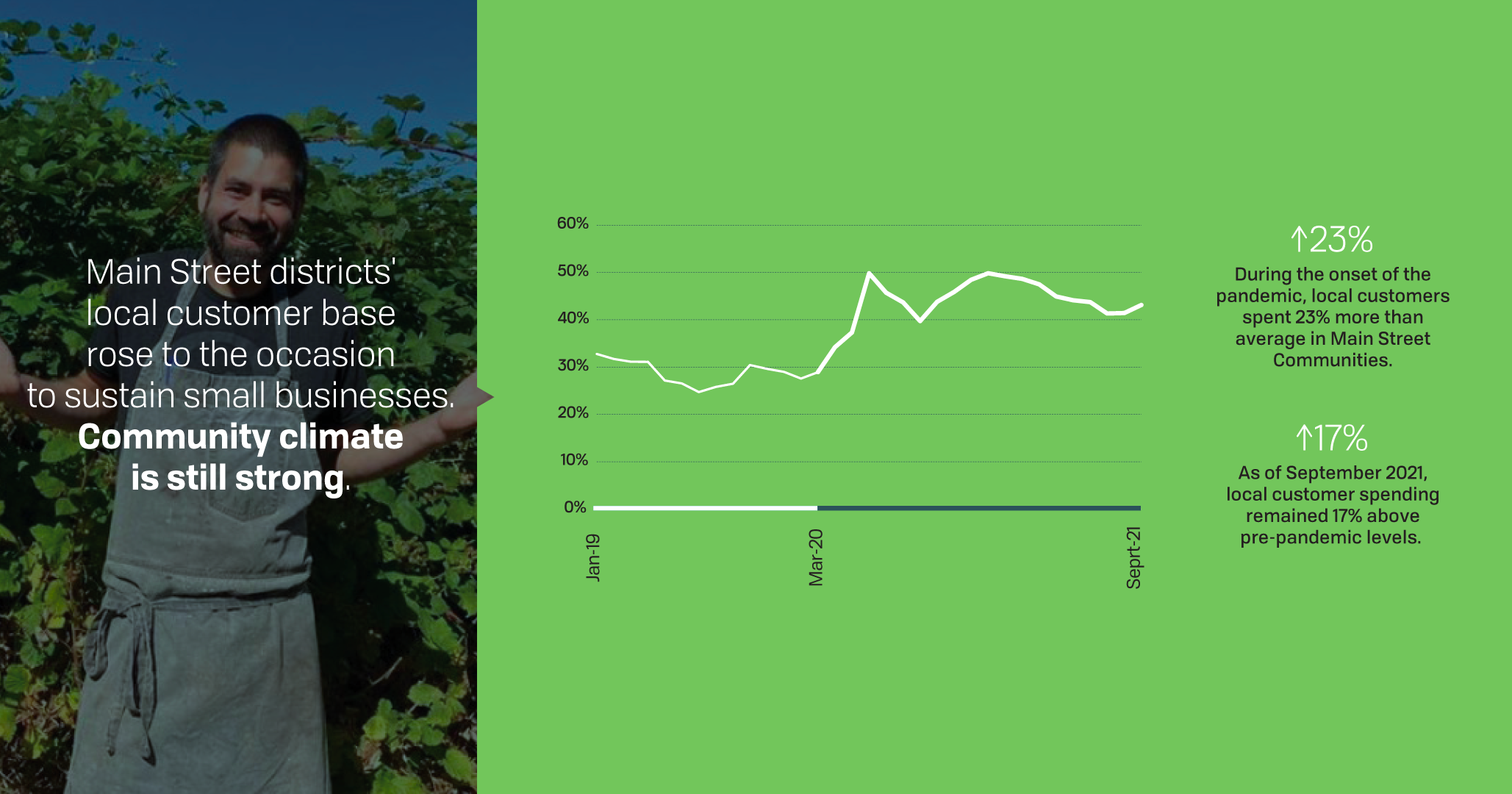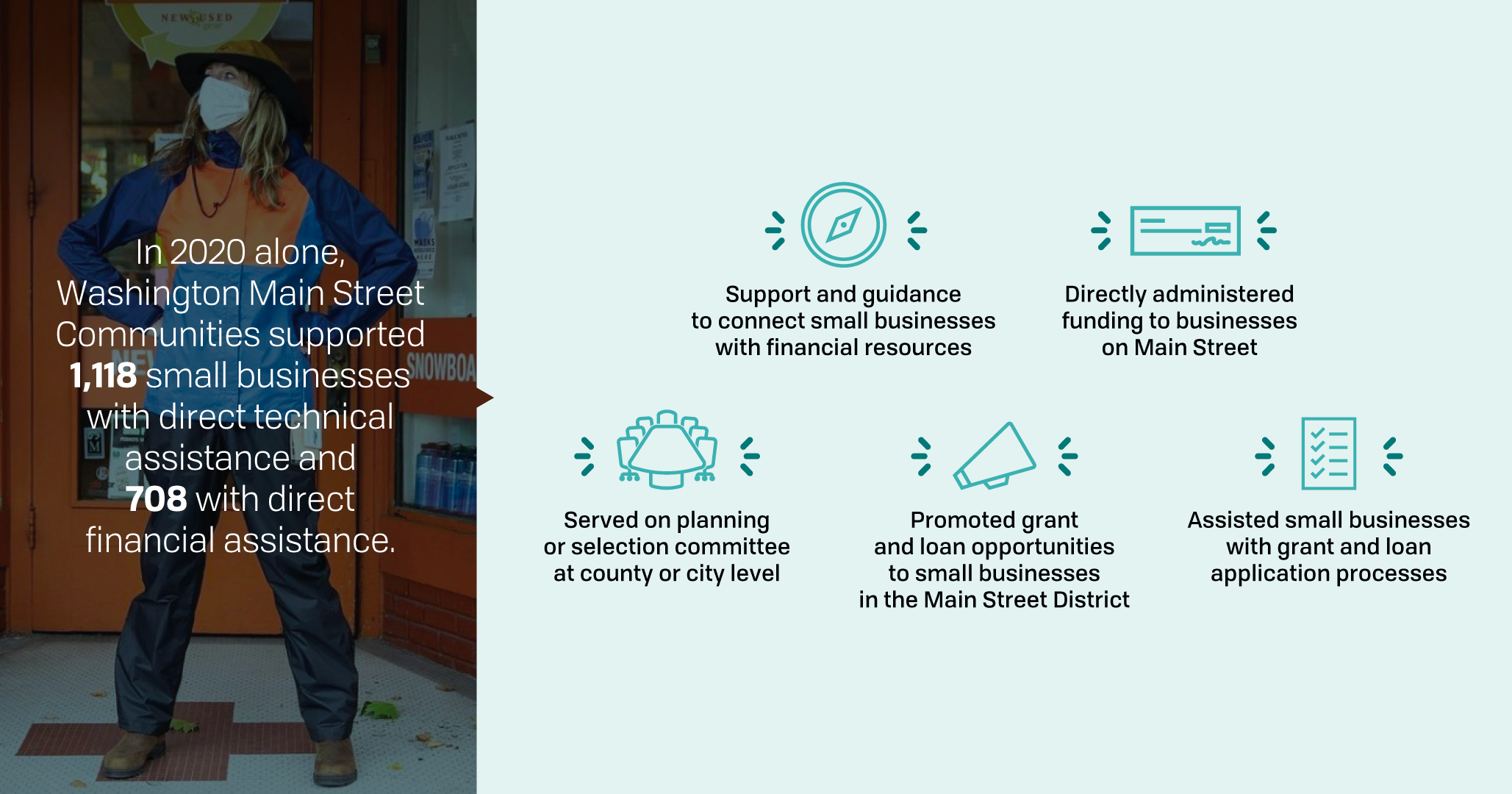In Good Times & In Bad
Throughout the course of the pandemic, we have seen how local Main Street organizations have served as lifelines to their small businesses through uncertainty, the deluge of information, and wave after wave of challenges. Story after story confirmed that there is something truly special about doing business in a Main Street district.
Thanks to granular credit card data that breaks down to the consumer’s home zip code, we’re able to paint a clearer picture of just how small businesses located in Main Street districts compared to businesses located in similar districts without the presence of a Main Street organization. Here’s what we learned:
- Main Street businesses rebounded from the pandemic at a faster rate than other areas without Main Street organizations.
- In fact, by fall 2021, consumer spending in Main Street districts surged significantly higher than pre-pandemic levels. This long-range resiliency outpaces similar districts without a Main Street organization.
- Restaurants in Main Street districts saw a decline of over 40% of customer spending during those first few months of the pandemic. But by October 2021, spending at restaurants exceeded pre-pandemic levels by 19% in Main Street districts, which is 7% better than in similar districts without Main Street organizations. Meanwhile, the statewide restaurant spending remained 2% below pre-pandemic levels.
- The share of local customer spending nearly doubled in May 2020 compared to before the pandemic. And that high level of local spending has not trickled off after the initial emergency of 2020. The community loyalty and pride that Main Streets have nurtured over the years has helped keep their businesses’ doors open.
- Main Street organizations provided critical direct technical assistance to over 1,000 businesses, direct financial resources to over 700, and touched over 3,500 small businesses through education and information during those crazy first months of the pandemic. They also activated over 340,000 square feet of public space to benefit small businesses–that’s about 10,000 on average per community. Every single local program that makes up the Washington Main Street network provided support and guidance to small businesses during the pandemic.
We are proud to share this report because it reflects what we witnessed as an incredibly strong show of support and ingenuity during the pandemic, and because it confirms that the type of economic development that Main Street organizations practice every day – a people-centered, nimble, and responsive approach – is critical to our communities in good times and in bad. Resiliency isn’t just about the response in the wake of a crisis, but about the strong baseline of community connections that Main Street works to build every day.




























